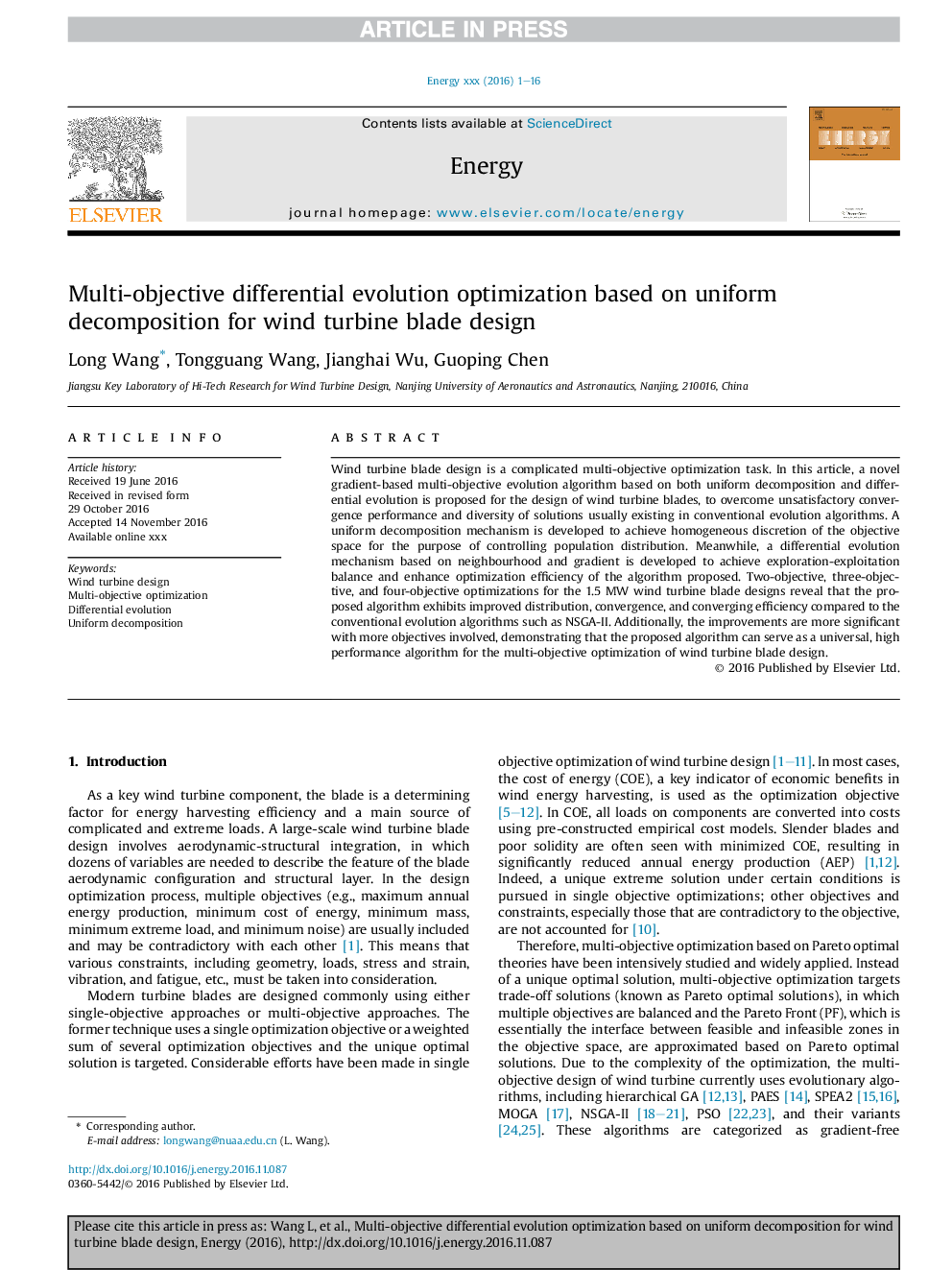| Article ID | Journal | Published Year | Pages | File Type |
|---|---|---|---|---|
| 5476170 | Energy | 2017 | 16 Pages |
Abstract
Wind turbine blade design is a complicated multi-objective optimization task. In this article, a novel gradient-based multi-objective evolution algorithm based on both uniform decomposition and differential evolution is proposed for the design of wind turbine blades, to overcome unsatisfactory convergence performance and diversity of solutions usually existing in conventional evolution algorithms. A uniform decomposition mechanism is developed to achieve homogeneous discretion of the objective space for the purpose of controlling population distribution. Meanwhile, a differential evolution mechanism based on neighbourhood and gradient is developed to achieve exploration-exploitation balance and enhance optimization efficiency of the algorithm proposed. Two-objective, three-objective, and four-objective optimizations for the 1.5Â MW wind turbine blade designs reveal that the proposed algorithm exhibits improved distribution, convergence, and converging efficiency compared to the conventional evolution algorithms such as NSGA-II. Additionally, the improvements are more significant with more objectives involved, demonstrating that the proposed algorithm can serve as a universal, high performance algorithm for the multi-objective optimization of wind turbine blade design.
Related Topics
Physical Sciences and Engineering
Energy
Energy (General)
Authors
Long Wang, Tongguang Wang, Jianghai Wu, Guoping Chen,
